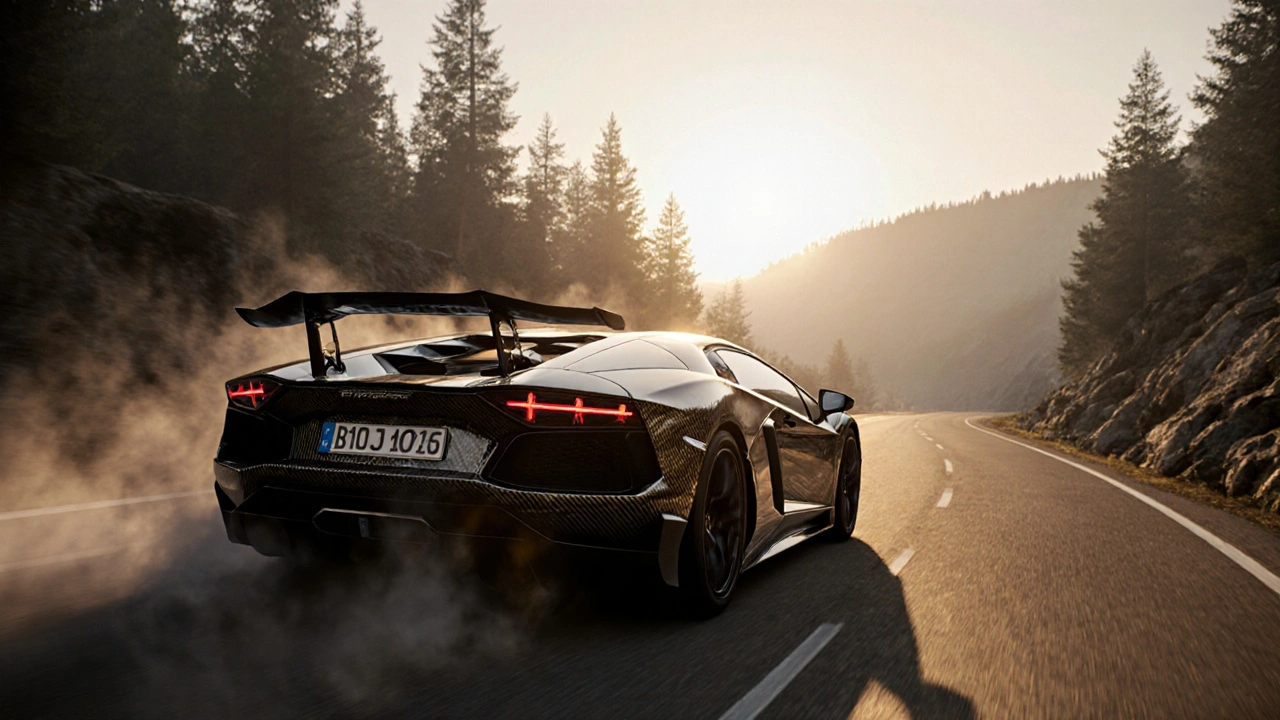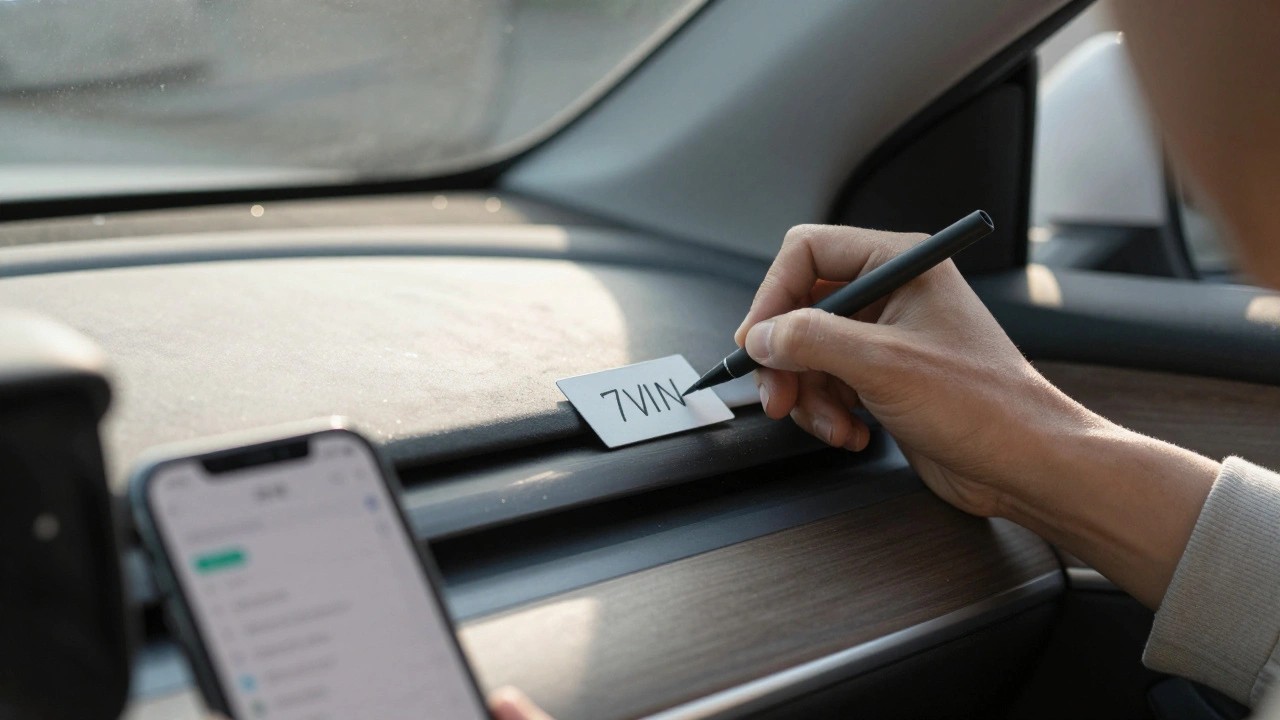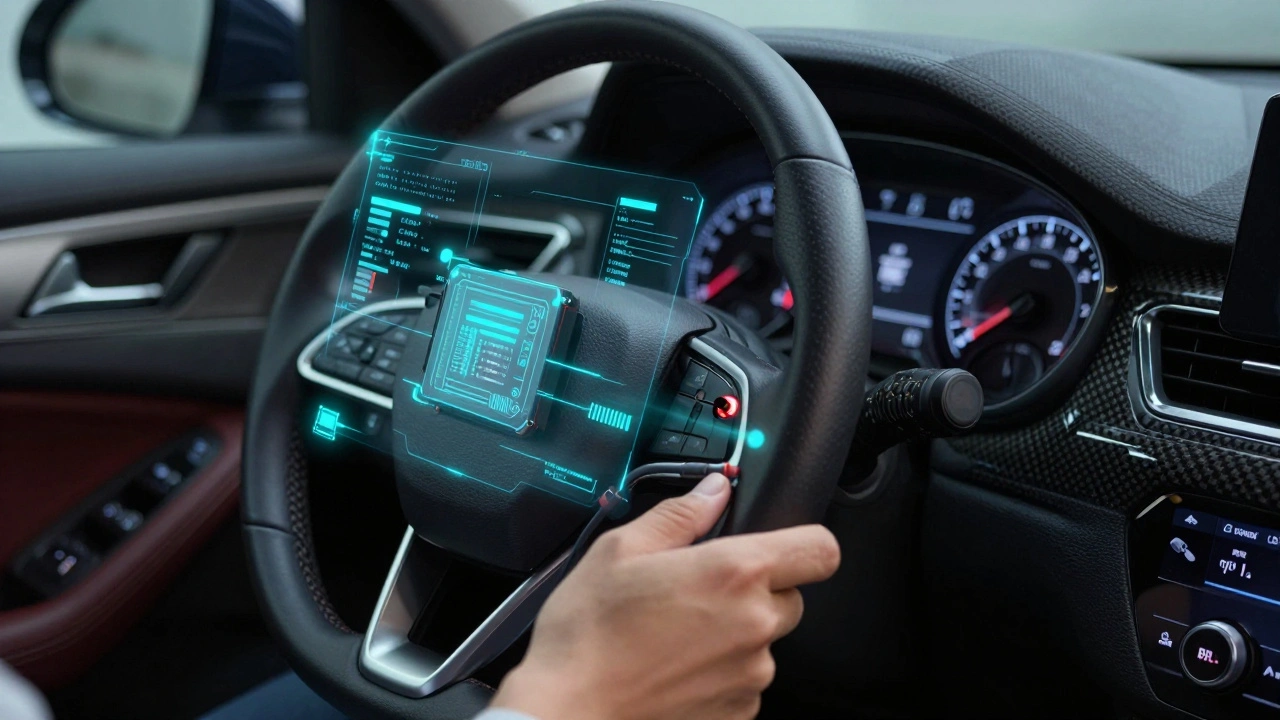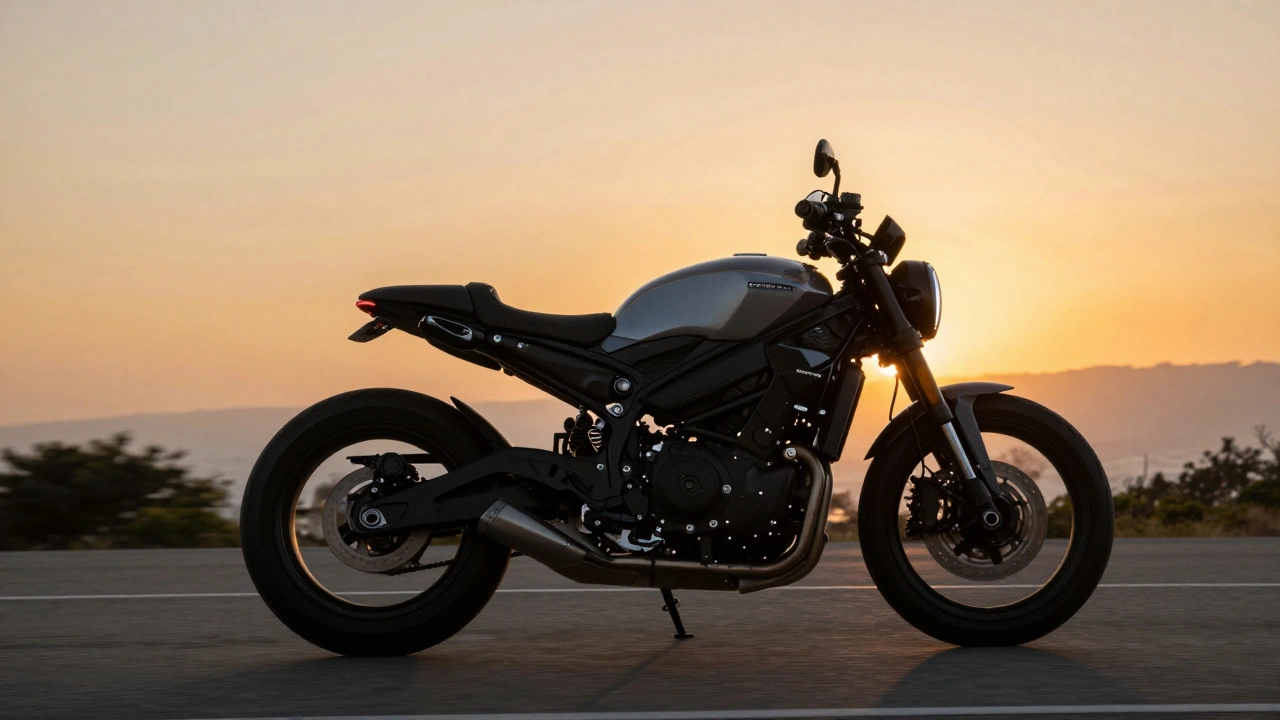Lamborghini isn’t just a car brand-it’s a statement. When you hear the name, you don’t think about commuting or fuel efficiency. You think of snarling V12 engines, carbon fiber curves that look like they were carved by lightning, and the kind of presence that makes people stop walking just to stare. Lamborghini builds machines that don’t just move you-they make you feel alive. And while the brand started with pure, unfiltered supercars, it’s now just as famous for its luxury SUVs that can outpace most sports cars on a track.
Where It All Began: The Birth of the Supercar
In 1963, Ferruccio Lamborghini didn’t just want to build another sports car. He wanted to build one that could beat Ferrari at its own game. After a dispute with Enzo Ferrari over clutch issues in his own Ferrari, Ferruccio decided to make something better. The result? The 350 GT. It had a smooth V12, a refined interior, and a level of comfort Ferrari didn’t bother with. But it was the Miura, unveiled in 1966, that changed everything. It was the world’s first mid-engine sports car with a V12-something no one had done before. The Miura didn’t just look fast; it was fast. And it set the template for every supercar that came after it.
Decades later, the DNA of that Miura lives on in the Aventador and the Huracán. The Aventador’s 6.5-liter V12 screams to 8,500 rpm, making 780 horsepower in its latest SVJ version. The Huracán, smaller and more agile, uses a 5.2-liter V10 that spins even faster-up to 8,700 rpm. These aren’t just engines. They’re musical instruments tuned by engineers who treat torque curves like symphonies.
Design That Doesn’t Ask for Permission
Lamborghini doesn’t follow trends. It sets them. Look at the Countach from the 1970s-those scissor doors, the wedge shape, the sharp angles. It looked like a spaceship that landed on Earth and refused to leave. Today’s Urus SUV carries that same attitude. Its hexagonal grille, sharp creases, and aggressive wheel arches don’t whisper-they shout. Even the Huracán’s rear wing isn’t just for downforce; it’s part of the drama. Every curve is intentional. Every surface is sculpted to cut air or catch eyes. And yes, the paint options? They’re not just colors. They’re named after volcanoes, storms, and ancient myths. Rosso Mars, Verde Mantis, Arancio Borealis-you don’t pick a color. You pick a personality.
The Urus: When a Supercar Becomes an SUV
Before the Urus, the idea of a Lamborghini SUV sounded like a joke. A Lamborghini that carries groceries? A Lamborghini with four doors and a trunk? But in 2018, Lamborghini proved that if you build something fast enough, people won’t care how many seats it has. The Urus packs a twin-turbocharged 4.0-liter V8 that makes 650 horsepower. It hits 60 mph in 3.1 seconds. That’s faster than the original Audi R8. It’s faster than most Porsches. And it does it while seating five, carrying luggage, and offering heated leather seats and a 12.3-inch digital dashboard.
It’s not just about speed. The Urus has drive modes that switch its personality. In Strada (street), it’s smooth and quiet-like a luxury sedan. Switch to Corsa (race), and the exhaust cracks like gunfire, the suspension stiffens, and the all-wheel-drive system sends nearly all power to the rear. You can drift it. You can haul kids to school in the morning and race a Ferrari on the weekend. No other SUV does that.

Inside: Luxury Meets Aggression
Step inside any modern Lamborghini, and you’re not in a car. You’re in a cockpit. The seats hug you like a racing harness. The steering wheel is flat-bottomed, thick, and wrapped in Alcantara. The gear selector? It’s a tiny toggle switch that feels like you’re launching a missile. The infotainment screen is clean, but it’s not the star. The star is the engine. You hear it before you see it. You feel it in your chest before you even press the gas.
There’s no pretending this is a family SUV. Even the Urus doesn’t try. The dashboard angles toward the driver like a fighter jet. The door handles are shaped like jet turbine blades. The ambient lighting? It pulses like a heartbeat. And the materials? Hand-stitched leather, carbon fiber that’s so thin you can see the weave, aluminum that’s been anodized to a mirror finish. It’s not about comfort in the traditional sense. It’s about immersion. You don’t ride in a Lamborghini. You become part of it.
How Much Does It Cost? And Is It Worth It?
A new Huracán starts around $210,000. The Aventador? Around $420,000. The Urus? $230,000. These aren’t prices for cars. These are prices for experiences. And yes, you can find used models for less, but maintenance isn’t cheap. A simple oil change can cost $1,200. A set of tires? $3,000. Brakes? $8,000. Lamborghini doesn’t make cars for people who care about running costs. They make them for people who care about legacy.
And here’s the thing-resale value holds up better than you’d think. A well-maintained Urus from 2020 might still fetch $180,000 today. A Huracán with low miles? It’s often worth more than it was new. Why? Because Lamborghini doesn’t build them in huge numbers. They’re rare. They’re emotional. And once you own one, you don’t just sell it-you pass it on to someone who understands.

What’s Next? Electric and Beyond
Lamborghini is going electric. By 2027, every new model will have an electric version. The Revuelto, their latest V12 hybrid, already combines a 6.5-liter engine with three electric motors, pushing out 1,015 horsepower. It’s not just about power-it’s about control. Electric motors deliver instant torque, which means the car can launch with terrifying precision. The battery pack sits low in the chassis, lowering the center of gravity. That’s good for handling. And yes, it still sounds like a demon. The exhaust note is digitally enhanced to keep that signature roar.
But the real question isn’t about power. It’s about identity. Can a Lamborghini still feel like a Lamborghini without a screaming V12? The answer, so far, is yes. The Revuelto still looks like it came from the future. It still handles like it’s on rails. And when you press the accelerator, the noise might be engineered-but the feeling? That’s pure Lamborghini.
Who Buys These Cars? And Why?
It’s not just billionaires. Sure, some buyers are tech founders or celebrities. But a lot are doctors, lawyers, engineers-people who saved for years, worked hard, and decided they wanted something that made them feel like they’d won. They don’t buy Lamborghinis to show off. They buy them because they’ve earned the right to feel something extraordinary.
One owner in Miami told me he bought his Urus after surviving cancer. He didn’t want a safe car. He wanted something that reminded him he was still alive. Another guy in Chicago drives his Huracán to his accounting job every day. He says it’s his therapy. “It’s not about speed,” he said. “It’s about control. When everything else is loud, the car is quiet. And when I drive, I’m the only one who knows how much power I’m holding.”
Final Thought: More Than Metal
Lamborghini doesn’t sell cars. It sells moments. The moment your foot touches the pedal and the engine howls like a dragon waking up. The moment you pull up to a stoplight and see five people taking pictures. The moment you turn a corner on a mountain road and feel the car dance beneath you. These aren’t just machines. They’re extensions of ambition, passion, and defiance.
Whether it’s a Huracán slicing through traffic or an Urus carving through snow, Lamborghini makes vehicles that don’t just get you from A to B. They make you feel like you’ve already arrived.
What’s the fastest Lamborghini ever made?
The fastest Lamborghini ever made is the Aventador SVJ, with a top speed of 217 mph. It hit a Nürburgring lap time of 6:44.97, making it the fastest production car on the track at the time of its release. The new Revuelto hybrid is even quicker off the line, hitting 60 mph in 2.5 seconds, but the SVJ still holds the top speed record for a non-hybrid Lamborghini.
Is the Lamborghini Urus really a supercar?
Yes, in performance terms, the Urus is a supercar disguised as an SUV. It has a 650-horsepower V8, hits 60 mph in 3.1 seconds, and can reach 190 mph. It’s faster than a Porsche 911 Turbo S and rivals the Ferrari F8 Tributo. While it has four doors and a trunk, its handling, acceleration, and engine sound are straight out of a supercar playbook. Lamborghini calls it a "Super SUV," and that’s not marketing-it’s fact.
How often does a Lamborghini need maintenance?
Lamborghini recommends servicing every 9,000 miles or once a year, whichever comes first. But if you drive aggressively or track the car, you’ll need more frequent checks-especially on brakes, tires, and clutch components. The clutch in a Huracán or Aventador can wear out faster than in a regular car, especially with stop-and-go driving. Oil changes cost around $1,200, and brake pads for a V12 model can run $5,000 or more.
Are Lamborghinis reliable?
They’re not Toyota Camrys, but they’re far more reliable than people think. Modern Lamborghinis, especially from 2015 onward, have solid electronics and fewer mechanical failures than older models. The biggest issues tend to be with the dual-clutch transmission in high-mileage cars and electrical glitches in the infotainment system. With proper care, a Huracán or Urus can easily reach 100,000 miles without major repairs. Regular maintenance and avoiding track abuse are key.
What’s the difference between the Huracán and the Aventador?
The Huracán is the smaller, lighter, and more agile option. It uses a V10 engine and is designed for daily driving and sharp cornering. The Aventador is bigger, heavier, and more powerful, with a V12 engine that delivers a deeper, louder roar. It’s meant for straight-line speed and presence. If you want a car you can drive every day and still feel excited, go Huracán. If you want the ultimate statement piece with raw, unfiltered power, choose the Aventador.
Can you use a Lamborghini SUV for off-roading?
The Urus can handle dirt roads, light trails, and snowy conditions thanks to its all-wheel drive and ground clearance. But it’s not built for rock crawling or deep mud. Its low-profile tires, carbon fiber body panels, and aggressive aerodynamics aren’t made for extreme off-roading. Think of it as a luxury SUV that can handle a gravel driveway or a beach access road-not a Land Rover Defender. Stick to paved roads and light terrain to protect the car’s value and performance.






Stephanie Serblowski
November 23, 2025 AT 20:02Okay but the Urus is basically a Ferrari F8 with a trunk and heated seats 😂 I’ve seen people park it at Whole Foods like it’s a Prius. The drama is real, the grocery runs are realer.
Renea Maxima
November 24, 2025 AT 14:39They say Lamborghini sells moments… but what if the moment is just a $1,200 oil change and a therapist bill? The car doesn’t make you feel alive-it makes your bank account feel dead.
Jeremy Chick
November 25, 2025 AT 21:12Bro the Revuelto’s electric torque delivery is like getting punched by a god. V12 purists can cry in their carbon fiber pillows. This isn’t evolution-it’s a fucking upgrade.
Sagar Malik
November 27, 2025 AT 17:49Let me be clear-Lamborghini is a Western capitalist fantasy engineered to distract the proletariat from systemic collapse. The V12 roar? A sonic placebo. The Urus? A mobile status symbol for the insecure elite. And don’t get me started on the ‘digital exhaust note’-it’s all AI-generated patriarchy in carbon fiber.
Seraphina Nero
November 27, 2025 AT 21:54I just love how the article mentions that one guy drives his Huracán to his accounting job. That’s so sweet. Sometimes you just need something beautiful to remind you you’re still here.
Megan Ellaby
November 29, 2025 AT 08:53wait so the urus can drift?? like… for real?? i thought suvs were for soccer moms and dog trips 😅 but if you can drift it AND carry your kids?? that’s next level. i need to see a video of this.
Michael Thomas
December 1, 2025 AT 08:37America makes the best cars. Europe makes expensive toys. Lamborghini is a tax write-off for rich Europeans who think they’re rebels.
Abert Canada
December 2, 2025 AT 11:12Man I drove a used Huracán last summer. The sound? Like a dragon clearing its throat while being tickled. The clutch? Like trying to butter toast with a chainsaw. But damn… when you floor it on a backroad? Nothing else comes close. I cried a little. Not because it was fast. Because it felt alive.
Xavier Lévesque
December 3, 2025 AT 09:10They say ‘Lamborghini doesn’t sell cars, it sells moments’… yeah, but the moment ends when you realize your insurance costs more than your rent. Still… I’d take the debt.
Thabo mangena
December 3, 2025 AT 22:24It is truly remarkable how the marque transcends mere transportation and ascends to the realm of artistic expression. One is not merely operating a vehicle, but participating in a symphony of mechanical genius and human aspiration. The craftsmanship, the aerodynamic elegance-it is nothing short of sublime.
Karl Fisher
December 5, 2025 AT 22:22Okay but the Rosso Mars paint job? That’s not a color. That’s a vibe. I saw one at a coffee shop last week and the barista dropped her latte. I swear to god, the whole block stopped. That’s not a car. That’s a cultural reset.
Buddy Faith
December 6, 2025 AT 08:47electric lambos are fake the v12 is the soul the noise is the heartbeat they’re just putting batteries in a sculpture and calling it progress
Scott Perlman
December 8, 2025 AT 02:15My buddy bought a used Urus. He said it’s the only thing that makes him feel like he’s not just another guy in a cubicle. That’s all you need.